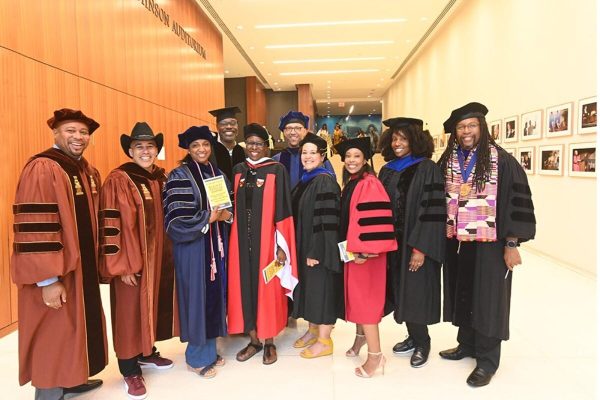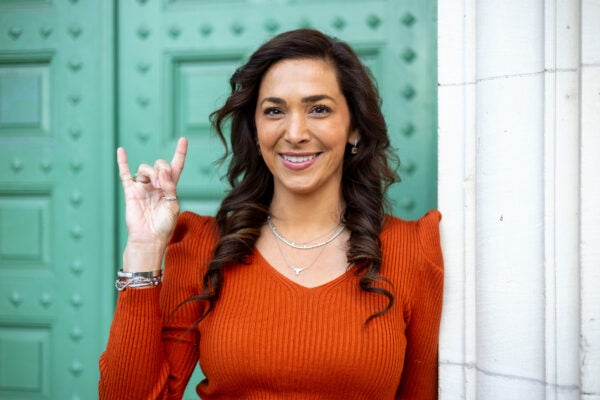In July, amid nationwide discussions about race and hearing deep concerns from members of the UT community, President Jay Hartzell, then still interim, announced a list of initiatives to promote diversity, equity and inclusion at the university in order to make UT a more welcoming and inclusive campus. After numerous meetings with students, alumni, faculty and staff members, Hartzell wrote: “It is clear from these conversations and from the data I’ve reviewed that we can do better. So, together with the support of other members of university leadership, I am announcing a series of initiatives today to change that.”
The letter was co-signed by Vice Presidents Dan Jaffe, Darrell Bazzell, Soncia Reagins-Lilly, Leonard Moore and Chris Del Conte.
The efforts they announced fell into two categories: recruiting, attracting, retaining and supporting even more talented and diverse students, staff members and faculty members; and reconsidering how to best reflect UT’s values, both in the symbols and names on our campus and the openness with which we tell our history. Much of that plan dealing with campus symbolism became the subject of mainstream media attention.
Less covered was the hard work of increasing diversity among students, faculty and staff members. The Hartzell initiative included new funding to better recruit outstanding high school students across Texas, to expand research and scholarship, and, for the faculty specifically, to leverage a university-wide plan that has been in the works for more than a year under the leadership of Vice Provost for Diversity Ted Gordon.
The Why
Nationally, the importance of diversity in university faculties is often simply framed as an ethical obligation. But there are practical reasons for diversity, which relate the educational benefits of diversity that UT successfully defended before the U.S. Supreme Court in the Fisher case of 2016.
One is teaching effectiveness, Gordon says. “There’s a considerable amount of research that says that a diverse student population learns better, more clearly identifies with the academic mission, and gets more out of the higher ed experience overall if the students have faculty members and mentors who have had experiences that are in one way or another comparable to their experience or whom they identify with in various kinds of ways.”
It is not that Black students, for example, learn better from Black professors, he says. “But they often have a different kind of experience with Black faculty than they do with faculty from other backgrounds,” Gordon says, “and that variety of experience is often very positive for them. I’m not saying at all that racially, ethnically or culturally distinct people can’t learn from people of a different culture, race or ethnicity; in fact, I’m saying just the opposite. Variety really helps in terms of learning. But we also do know that certain kinds of relationships, certain kinds of interactions, happen within social identities, and that’s an important component of an educational experience as well.”
Beyond that, in a complex world, diversity is an indispensable aspect of intellectual excellence. “Being exposed to different ideas from differently positioned scholars is tremendously productive in pushing the frontiers of our knowledge,” Gordon says.
It also is important to create an intellectually diverse community. “Texas is a very diverse state, and we’re the flagship institution.” Having those Texans represented at UT will bolster their collective support for the institution, Gordon says.
As the university’s diversity statement says: “As a university with a past history of denying equitable access to qualified students, UT recognizes the profound benefits of creating an inclusive environment in which students can learn from one another.”
Gordon agrees. “In a country and at an institution that has a history of not always being equitable and inclusive, we have an ethical obligation to be as equitable and inclusive as possible as we strive toward intellectual, pedagogical and scholarly excellence,” he says.
Moore, UT’s vice president for diversity and community engagement, concurs. “We need to remember that for the first 80 years of UT’s history, the school made a strategic decision to legally exclude African Americans,” he says. “Even after integration, it would be another 30 to 35 years before UT would have a critical mass of African American students.”
Identifying Problem Areas
Gordon’s work has included making information about the gender and ethnic diversity of the faculty as publicly available as possible. An equity and inclusion tab on the provost’s website shows statistics for the university in general, each college and school, and every department. Different disciplines need different kinds of diversification, he says. For example, the nursing field is trying to attract more men, so the lack of men on the faculty in nursing should be addressed. In liberal arts, the faculty is skewed toward women, but not in all departments: About 70% of psychology majors are women whereas only about 44% of the psychology faculty who are tenured or tenure-track are women.
Gordon rejects any suggestion that men and women could be drawn naturally to one discipline over another. “At a university like this, the assumption that a person of a particular body is more naturally adept at some intellectual work than another is something that we don’t accept,” he says. “That notion is exclusionary.”
STEM fields historically have lacked gender and racial diversity among faculty members, more so than liberal arts, but liberal arts has room for improvement.
And according to Gordon, “The whole university has a really severe problem in terms of Latinx faculty members.” Just over 25% of undergraduates are Hispanic, compared with 7% of faculty members.
The How
“We do not hire according to identity,” Gordon says. So what is the remedy?
The first and perhaps most important step is ensuring that the pool of candidates is as diverse as possible. “You do whatever is necessary to recruit people to your hiring pool,” he says. “We need more Latinx faculty members, so one thing we try to do when we post a position is to get that advertisement in front of Latinx faculty members or potential faculty members. We can even reach out and encourage people to apply.”
Once the pool is diverse, the criteria expand. “We are looking for people who are excellent scholars but who also have interest, knowledge and skills in helping the university produce an equitable and inclusive environment,” Gordon says, pointing out that members of any race or gender can and should do that.
Retaining a Diverse Faculty
It does little good to recruit talented people who increase faculty diversity if UT can’t hold on to them. “That’s been a little bit of a problem here because we’ve tended to hire diverse faculty members, particularly racial and ethnic minorities, at the junior level,” Gordon says. “This is a Research 1 university. Faculty will come here at the junior level, get tenure, burnish their publication records, and the next thing you know, Michigan, Berkeley, Harvard, Princeton, Yale and Chicago recruit them away.”
And not all faculty members of color are enthusiastic about moving from the West Coast, East Coast or Upper Midwest, he says. “It can be a little bit of a sell.”
Which brings us back to the other initiatives announced in July. Perhaps a more concerted effort to align the symbols of the campus with UT’s professed values will turn at least some of these headwinds into tailwinds.
As Hartzell wrote, “This work starts and ends by creating an environment in which students, faculty and staff are fully supported before, during and after their time at UT.”




